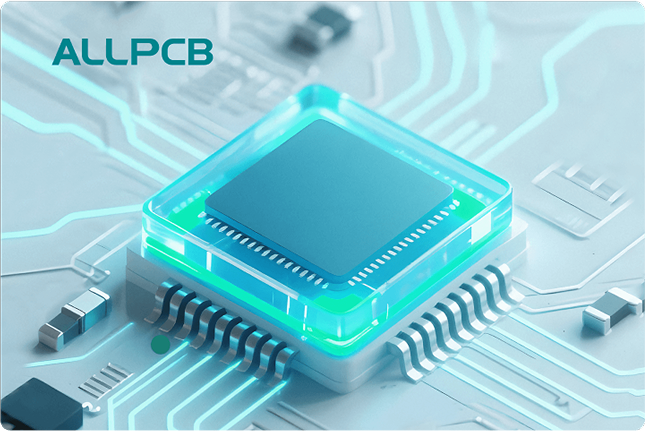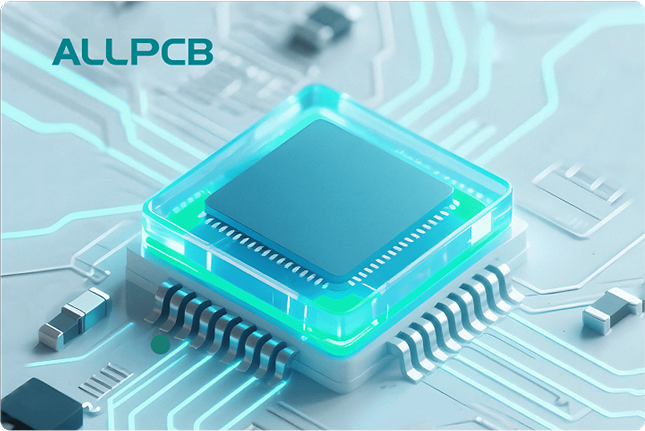If your microcontroller prototype isn’t working as expected, you’re not alone. Many engineers and hobbyists face challenges when integrating microcontrollers into PCB designs. Whether it’s a coding glitch, a hardware fault, or an assembly error, troubleshooting these issues can be frustrating. In this comprehensive guide, we’ll walk you through the most common microcontroller issues in PCB prototypes and provide practical solutions for debugging and fixing them. From identifying why your microcontroller prototype is not working to addressing common errors in PCB design, we’ve got you covered with actionable tips for microcontroller debugging on PCBs.
At ALLPCB, we understand the importance of getting your prototype right the first time. Let’s dive into the details of microcontroller PCB assembly troubleshooting, fixing code errors, and ensuring your design functions smoothly.
Why Do Microcontroller Issues Occur in PCB Prototypes?
Microcontrollers are the heart of many electronic projects, acting as the brain that processes inputs and controls outputs. However, when embedded into a PCB prototype, they can encounter a range of issues stemming from design flaws, assembly mistakes, or software bugs. These problems often lead to a microcontroller prototype not working as intended. Some of the primary reasons include improper power supply connections, signal integrity issues, incorrect component placement, or errors in the firmware code.
Understanding the root causes of these issues is the first step in effective troubleshooting. By systematically addressing hardware and software challenges, you can save time and resources during the prototyping phase. Let’s break down the most common microcontroller errors in PCB design and how to resolve them.
Common Microcontroller Errors in PCB Design
Designing a PCB for a microcontroller requires precision. Even small oversights can lead to significant issues. Here are some frequent errors encountered during the design phase and how to tackle them:
1. Power Supply Problems
One of the most common reasons a microcontroller prototype is not working is an unstable or incorrect power supply. Microcontrollers often require specific voltage levels, such as 3.3V or 5V, and any deviation can cause erratic behavior or complete failure. For instance, if the input voltage exceeds the microcontroller’s maximum rating (e.g., 5.5V for many 3.3V devices), it can damage the chip.
Solution: Double-check the voltage requirements of your microcontroller from its datasheet. Use a voltage regulator to ensure a stable supply, and include decoupling capacitors (typically 0.1μF to 1μF) near the power pins to filter out noise. Additionally, verify that your PCB layout avoids long power traces, which can introduce voltage drops.
2. Incorrect Pin Connections
Misconnecting pins during the design phase is another frequent issue. For example, connecting an input pin to a high-current output or failing to pull reset pins to the correct logic level can prevent the microcontroller from functioning.
Solution: Carefully review the microcontroller’s pinout diagram and ensure each pin is connected as per its intended function. Use pull-up or pull-down resistors (typically 10kΩ) on critical pins like reset or interrupt lines to avoid floating states. During microcontroller debugging on PCBs, use a multimeter to confirm connections match the schematic.
3. Signal Integrity Issues
High-speed signals or improper grounding can lead to noise and interference, affecting the microcontroller’s performance. For instance, crosstalk between adjacent traces or poor ground plane design can cause data corruption in communication protocols like I2C or SPI, which often operate at speeds of 100kHz to 400kHz.
Solution: Keep signal traces short and direct, especially for high-speed communication lines. Implement a solid ground plane to reduce noise, and separate analog and digital signals on the PCB to minimize interference. If possible, use simulation tools during the design phase to identify potential signal integrity problems before fabrication.
Microcontroller PCB Assembly Troubleshooting
Even with a flawless design, assembly errors can introduce problems into your PCB prototype. Soldering mistakes or component issues often lead to a non-functional board. Here’s how to address these during microcontroller PCB assembly troubleshooting:
1. Soldering Defects
Poor soldering, such as cold joints or bridges between pins, can disrupt connections to the microcontroller. This is especially common with fine-pitch components like QFN or BGA packages, where pins are spaced as close as 0.5mm apart.
Solution: Inspect solder joints under a magnifying glass or microscope for cracks, insufficient solder, or bridges. Use a soldering iron with a fine tip and appropriate flux to reflow problematic joints. For surface-mount microcontrollers, consider using a hot air rework station for precise repairs.
2. Component Orientation Errors
Incorrect placement or orientation of components, such as diodes or polarized capacitors, can prevent the microcontroller from receiving power or functioning correctly.
Solution: Verify the orientation of all components against the assembly diagram before soldering. Pay special attention to markings on ICs and ensure the microcontroller’s pin 1 aligns with the PCB silkscreen indicator. If a mistake is found post-assembly, desolder and reposition the component carefully to avoid damaging the board.
3. Damaged Components
Static discharge or overheating during soldering can damage sensitive microcontroller chips, rendering them unusable. For example, exceeding a soldering temperature of 300°C for more than a few seconds can harm many ICs.
Solution: Always use proper electrostatic discharge (ESD) protection, such as wrist straps and grounded mats, when handling microcontrollers. Follow recommended soldering temperatures and durations from the component datasheet. If you suspect damage, test the microcontroller on a separate development board to isolate the issue.
Fixing Microcontroller Code Errors on PCBs
Hardware isn’t always the culprit. Software or firmware issues can also cause a microcontroller prototype to malfunction. Let’s explore common code-related problems and how to fix microcontroller code errors on PCBs:
1. Incorrect Configuration Settings
Many microcontrollers require specific configuration settings for clock speed, peripherals, or I/O pins. For instance, setting a clock frequency of 16MHz when the hardware is designed for 8MHz can lead to timing issues in communication or processing.
Solution: Review the initialization code to ensure settings match the hardware design. Use the microcontroller’s reference manual to confirm correct register values for peripherals like UART or ADC. During microcontroller debugging on PCBs, use a debugger or serial monitor to check if the configuration is applied as expected.
2. Logic Errors in Firmware
Bugs in the code, such as infinite loops or incorrect conditional statements, can cause the microcontroller to behave unpredictably or freeze.
Solution: Test the firmware incrementally by commenting out sections of code to isolate problematic areas. Use debugging tools like breakpoints and watch variables to monitor program flow. Logging data via a serial interface (at baud rates like 9600 or 115200) can also help trace errors in real-time.
3. Memory Overflows
Running out of flash or RAM due to large programs or inefficient code can halt the microcontroller. For example, many 8-bit microcontrollers have only 2KB of RAM, which can be quickly consumed by recursive functions or large arrays.
Solution: Optimize your code by reducing variable sizes (e.g., using uint8_t instead of int when possible) and avoiding unnecessary data storage. Check the compiler’s memory usage report to ensure you’re within the microcontroller’s limits. If needed, upgrade to a microcontroller with more memory for complex applications.
General Tips for Microcontroller Debugging on PCBs
Debugging a microcontroller on a PCB prototype requires a systematic approach. Here are some overarching strategies to streamline the process:
- Use Diagnostic Tools: Invest in tools like a multimeter, logic analyzer, or oscilloscope to measure voltages, analyze signals, and detect timing issues. For instance, an oscilloscope can help identify signal jitter on a communication line operating at 1MHz.
- Start with Basic Tests: Before diving into complex debugging, confirm the basics—power supply, clock signal, and reset line functionality. A simple check can often reveal the root cause of a microcontroller prototype not working.
- Document Everything: Keep a log of tests performed, observations, and changes made during troubleshooting. This helps track progress and prevents repeating failed attempts.
- Isolate Issues: Test the microcontroller independently on a breadboard or development board to rule out PCB-specific problems. Similarly, test the PCB with a known working microcontroller to confirm hardware integrity.
Preventing Common Microcontroller Errors in Future PCB Designs
While troubleshooting is essential, prevention is even better. Here are proactive steps to minimize issues in your next PCB prototype:
- Simulate Designs: Use simulation software to test your schematic and layout for potential errors before manufacturing. This can catch issues like impedance mismatches (e.g., ensuring 50Ω for high-speed lines) early on.
- Follow Design Guidelines: Adhere to the microcontroller manufacturer’s layout recommendations, such as trace width (e.g., 0.254mm for low-current signals) and component placement rules.
- Prototype Iteratively: Build and test small sections of your design before creating a full prototype. This modular approach makes it easier to spot and fix errors.
- Double-Check BOM: Ensure all components in your Bill of Materials (BOM) match the design specifications to avoid assembly mismatches.
Conclusion: Mastering Microcontroller Troubleshooting for PCB Prototypes
Troubleshooting common microcontroller issues in PCB prototypes doesn’t have to be daunting. By addressing hardware design flaws, assembly errors, and software bugs systematically, you can get your project back on track. Whether you’re dealing with a microcontroller prototype not working, performing microcontroller debugging on PCBs, or fixing microcontroller code errors, the solutions outlined above provide a roadmap to success.
At ALLPCB, we’re committed to supporting engineers and hobbyists in bringing their ideas to life. With careful design, thorough testing, and effective troubleshooting, you can overcome common microcontroller errors in PCB design and assembly. Keep these tips in mind for your next project, and you’ll be well on your way to creating reliable, high-performing prototypes.
 ALLPCB
ALLPCB







